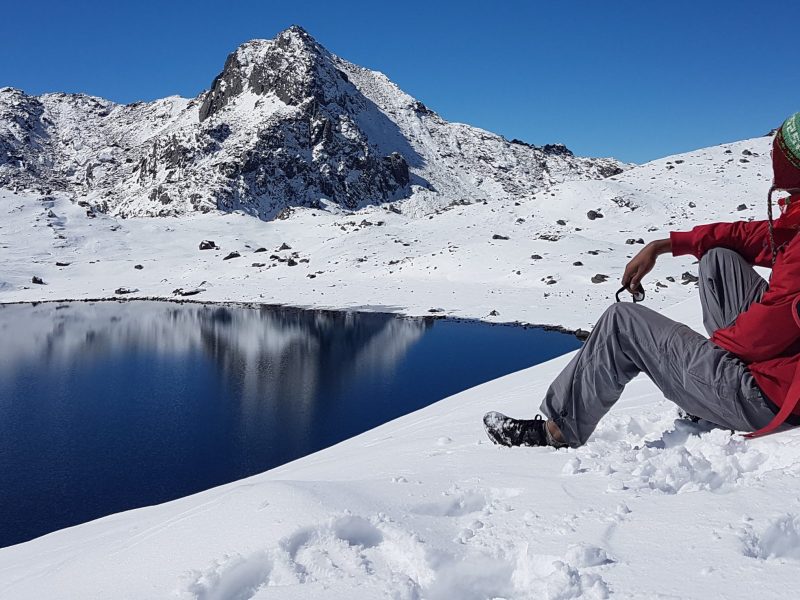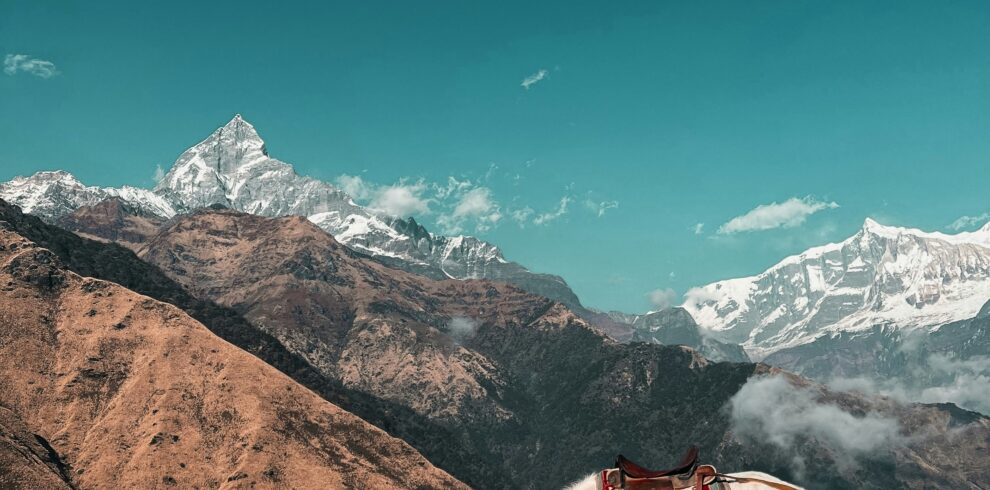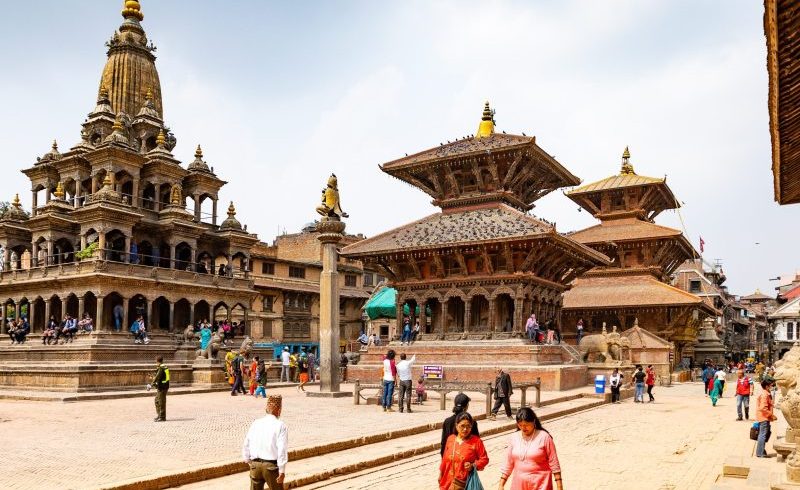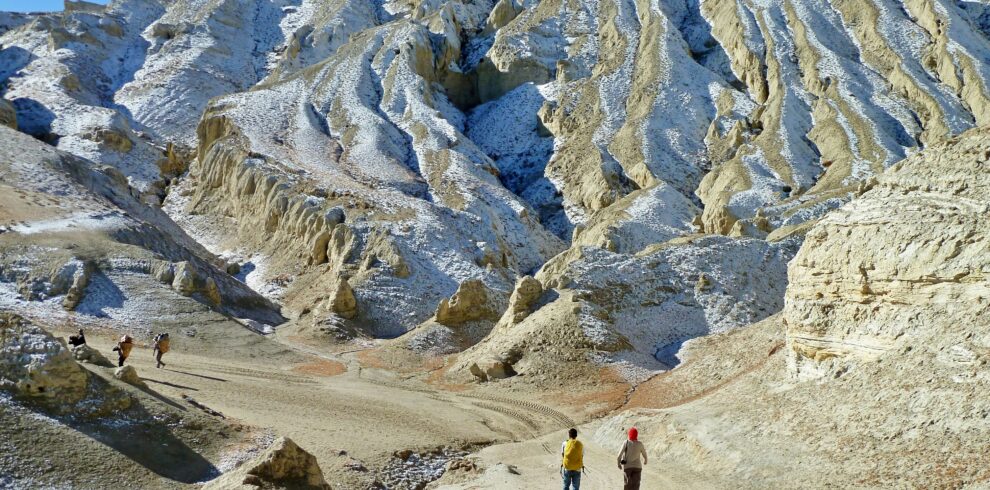Langtang Cultural Tour with Gosaikunda is a fascinating excursion that offers an alluring combination of natural beauty and cultural heritage. This tour takes you to indigenous mountain settlements where you can immerse yourself in the rich cultural of Himalayan foothills. The Langtang region is renowned as Nepal’s first Himalayan National Park, formerly known as the Langtang Snow Leopard-Red Panda Conservation Area. Perched on the northern border of Nepal, adjacent to Tibet covering an area of 1710 sq. km.
Trek Overview
The region is known for its stunning natural beauty, a habitat for a wide range of bird species, and home to over seven varieties of rhododendrons. The trekking route also leads you to the Shivapuri National Park, which lies in the mid-hills on the northern fringe of the Kathmandu Valley. The park is connected to Langtang National Park and serves as a migration route for various animals.
The Langtang Cultural Tour with Gosaikunda commences with a scenic drive from Kathmandu towards Dhunche, passing through several villages and central hills of the country. Dhunche serves as the starting point of the trek, heading towards Chandanbari on a steep off-ridge trail with most sections traversing uphill to gain elevation.
Gosaikunda Lake
Next, the trail leads towards the sacred Gosaikunda Lake, situated at an altitude of 4,380 meters (14,370 ft). This alpine freshwater oligotrophic lake is surrounded by rocky mountains and is regarded as a pilgrimage site by Hindu, Buddhist, and Bon followers. Witness the beauty of the lake and its changing colors, and don’t forget to witness the sun setting over the horizon in the afternoon.

From Gosaikunda, the trek proceeds towards the Laurebinayak Pass at an elevation of 4,610 meters, descending towards various villages and passing endless woodlands. The trail then leads towards Gul Bhanjyang, offering majestic views of the Dorje Lakpa, Shisha Pangma, and other peaks in the Khumbu region.
The trek continues towards Chisopani, passing through various villages and ancient chortens. The journey culminates at Sundarijal, and you will return to Kathmandu after completing the trek. The best time to undertake this tour is during the autumn and spring seasons, from September to November and March to May, respectively. Avoid the monsoon season as the weather can be harsh, making it difficult to explore the region. Additionally, winter is not recommended due to the high snowfall, which covers most of the trail, making it challenging to trek to higher elevations. Be a part of this Langtang Cultural Tour with Gosaikunda.
Entry Permits & Requirements:
The Langtang, Cultural Tour with Gosaikunda Lake requires the following permits:
1) Langtang National Park Permit
2) TIMS (Tourist Information Management System) card.
The Nepal Tourism Board’s office in Kathmandu can provide you with both a Langtang National
Park Entry Permit and a TIMS Card.
Fees for Permits:
- Foreign visitors must pay NRS 3000 per person, whereas nationals of SAARC nations
- must pay NRS 1,500 and Nepalese must pay NRS 100.
- If you are trekking with a guide, you will need a TIMS Card worth NRS 1000.
- Individual trekker receives NRS 2000 for free (FIT).
- NRS 300 if trekking with a guide and NRS 600 if trekking alone for SAARC countries nationals.
You will not have to worry about waiting for permits since the company, as well as our guides will take care of everything.
You must submit the following documents and data to get these permits:
- Copy of your passport
- 2 Passport-sized photos
- Dates when your trek starts and ends
- Itinerary/route
- Entry and exit points
- Emergency Contact Information (local and home country’s)
- Travel Insurance Details
Meals and Drinking Water:
Popular trekking areas like Annapurna, Everest, Langtang, and Manaslu have a menu system with different ethnic cuisines foods as well as western meals, but some places provide you with typical Nepali meals which are different from international meals, these meals are prepared by the local supplement, every tourist lodge and tea house has a well-trained cook basically attention to clean, hygienic, fresh, and delicious foods, every lodge has safe drinking water or mineral water. If you buy a water purification tablet from Kathmandu you can take water from the tap and purify it by yourself, this will be cheaper and control plastic pollution as well.
Travel Insurance:
Travel insurance is required for all clients engaging in any activity. We strongly urge you to obtain a complete insurance plan from reputable insurance.
Passport and Visa:
Every client must have a valid passport from the return date with a 6-month prior validity by the Nepalese consulate in your country or the immigration office at Tribhuvan International Airport in Kathmandu.
Accommodation:
You will find local accommodations in the form of trekking lodges and teahouses, which are situated every hour or so along the trail. These accommodations provide basic facilities such as food, electricity, and clean rooms. The rooms generally have twin sharing beds and a single bed, with good quality mattresses that reduce the weight of your backpack. You can expect a hygienic and comfortable atmosphere at these accommodations. The dining rooms have a central heating system that uses firewood to keep you warm and cozy during your stay. This is also a great place to rest and connect with other travelers by sharing your stories. Additionally, campsites are available along the trail for those who want to experience camping in outdoors.

Best Time to Visit?
The best time to go on a Langtang trek is during autumn and spring. The months of September, October, November, March, April, and May are the best time to visit as the weather conditions are better for exploring the high mountain terrain with good visibility.
During autumn, the weather is clear and warm, making it perfect for trekking on high Himalayan terrains. In spring, from March to May, the landscape changes with blooming trees of Rhododendron, mixed with Confers, Oaks, Orchids, and ferns, along with colorful wildflowers, making the region look stunning.
The monsoon season, with harsh weather conditions, is usually avoided by trekkers. The winter season, with heavy snowfall, covers most of the trail, making it challenging to access higher grounds in the Langtang region.
Equipment list:
- Daypack above 40 liters. (Must be waterproof)
- Down jacket (rental available)
- Warm sleeping bag (rental available)
- Sun head, gulf cap, sunglasses
- Headlamp, and torchlight, power bank, and extra batteries
- Ear-muffs, sun Lotions/sun cream, wet wipes, and hand sanitizer.
- Pair of liner gloves thin wool and synthetic.
- Cotton t-shirts, Synthetic t-shirt.
- Long-sleeve polyester or synthetic lightweight for sunny days.
- Soft-shell jacket water & wind resist.
- Swimming costume.
- Inner clothes as your requirement.
- Liner socks, woolen socks.
- Proper trekking boots with good ankle support.
- Imodium or Pepto Bismo capsules for upset stomach or diarrhea.
- Diamox for altitude sickness. The guide will help you to take it.
- One small personal-sized first-aid kit with blister treatments such as moleskin, bands,
- anti-infection ointments, muscle relief ointments
Important Note:
Your safety is of paramount importance to us at the Female Guide Holiday. We have the absolute authority to cancel the trip or change the itinerary, when deemed necessary or when we have reason to believe your safety is at stake. Weather conditions, the health condition of a group member, natural disasters, and such, can contribute to changes in the itinerary when traveling in remote mountainous regions. In these extreme situations, we kindly request that you offer your full co-operation to the trusted leader of the group appointed by the Female Guide Holiday. However, we assure you that we will make every effort to keep to the above itinerary.




